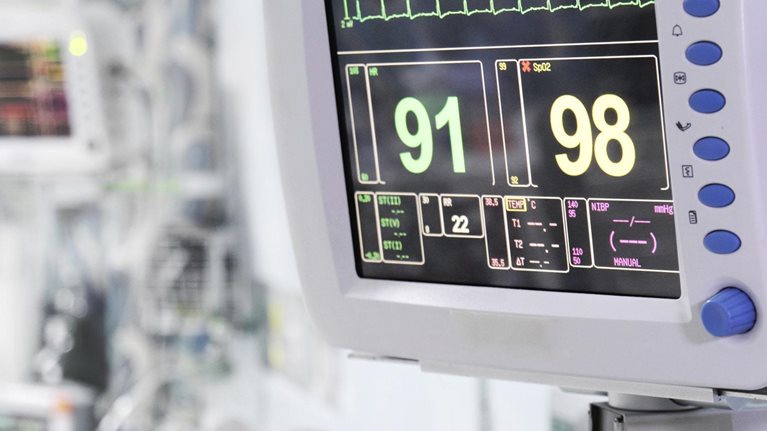More than half the world’s population lives in the Asia–Pacific region, and demand for healthcare there is correspondingly great. Currently, access to quality healthcare—in particular, modern medical technology, or med-tech—is difficult for many patients. Healthcare demand already outstrips supply in Asia–Pacific, and the gap will grow in line with continued increases in income, population, disease burdens, and general awareness of health issues.
A recent McKinsey report, MedTech in Asia: Committing at scale to raise standards of care for patients, explores the challenges med-tech companies face in broadening their reach and identifies strategies that can help bring high-quality products and services to more patients. Companies that overcome obstacles to serving broader patient segments in the region will also unlock rich opportunities. The region’s healthcare needs reflect its size and growth projections, and the Asia–Pacific med-tech market is expected to rise to about $133 billion a year in 2020, from about $88 billion a year in 2015. (For a visual look at the problems facing healthcare delivery in the Asia–Pacific region, as well as opportunities for global med-tech companies to address the growing demands, download our infographic [PDF–74KB].)
An expanding market
Asia–Pacific is a complicated collection of individual markets, often with little in common other than a shared continent. Political systems, economic development, cultural mores, and disease profiles, among other characteristics, vary widely from one country to the next. While other industries, such as high tech, have been relatively successful in approaching these complexities, med-tech companies are still finding their way. Although they’ve long been active in Asia–Pacific, these companies traditionally cater to premium customer segments.
However, by 2020, Asia–Pacific is expected to surpass the European Union as the world’s second-largest med-tech market (after the United States), and the majority of customers will lie beyond the premium segment. To reach these patients and defend against new competitors, global companies will have to rethink their approach to the region, creating new business models that encompass multiple channels, developing market-appropriate products rooted in innovation, allowing greater local autonomy, and removing structural barriers.
Our report combines interviews and surveys of 150 senior executives from 30 leading med-tech companies in Asia–Pacific with McKinsey insights. In addition, we examined case studies to identify measures that have helped some companies reach a broader range of patients in the region.
We found that med-tech companies in Asia–Pacific are hampered by several obstacles specific to the industry:
- limited financial resources and a frugal attitude toward spending on healthcare
- multiple customer segments that are difficult to serve efficiently
- an underdeveloped medical infrastructure and workforce, which affects the adoption and use of new technology
- fragmented and inconsistent regulatory and reimbursement regimes that can slow the introduction of new technology
- intense competition from regional start-ups and, increasingly, global leaders in adjacent industries such as high tech and consumer electronics
While these market realities are likely to linger for years, innovative and focused approaches could mitigate their impact.

Would you like to learn more about our Life Sciences Practice?
Four approaches
Beyond traditional market-development efforts, med-tech companies trying to tap into the region’s opportunities and better serve patients should focus on four themes. First, they should reexamine their commercial models and channels. Successful companies will have to build a range of go-to-market models that cater to patients with diverse needs and account for varying levels of healthcare awareness. Companies that lean heavily on distributor networks may require dramatic changes because such networks make it more difficult to develop closer links to end users and clearer insights into their needs.
Second, med-tech companies should review their offerings and develop market-appropriate products that appeal to customers seeking greater value. While one aspect of market-appropriate products is cost, another important element is innovative features designed to meet local needs, say, by considering differences in disease characteristics, patient-flow management, and clinical and surgical practices. Moreover, serving a broader range of segments means med-tech companies must build new capabilities, for example, to deepen their supply chains or develop cheaper and lighter-touch commercial models.
Third, global med-tech companies will need to empower their local organizations. The best Asian companies are competing with global leaders and benefit from sharp insights into local market needs and nimbler organizations. In contrast, global leaders are often slower in responding to patient needs and cannot shift resources as quickly. Too frequently, local teams have limited input on longer-term decisions related to product development or manufacturing. Global med-tech companies in the region must offer their local leaders greater autonomy to optimize decisions and resource allocations.
Finally, removing many of the structural barriers will require greater collaboration among stakeholders. Efforts here should center on building the capabilities of regulators and regulatory-affairs professionals, using technology to accelerate and enhance medical education, and encouraging shifts in attitudes and behaviors that hinder the adoption of new technology and delivery models among patients and providers.
Demand for better healthcare in Asia–Pacific is high and growing. In a few years, the region will become the world’s second-largest med-tech market. By taking a more assertive approach there, global med-tech companies can develop innovative ways to reach a broader range of patients and address their increasing demands. And by serving the healthcare needs of the region better, they will also position themselves to defend against competitors coming from almost every direction in this dynamic market.
Download the full report on which this article is based, MedTech in Asia: Committing at scale to raise standards of care for patients (PDF–5MB).


